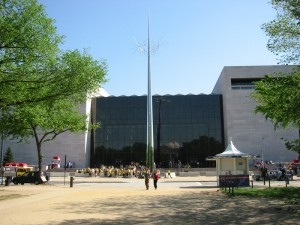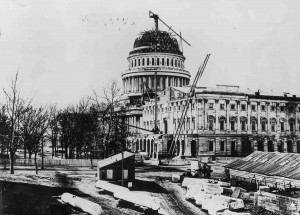
For social studies and history students, the Smithsonian National Museum of American History is a place for learning about any era of U.S. History. The ongoing exhibits are numerous and tackle larger topics such as: The American Presidency: A Glorious Burden, America on the Move, and American Heroes. Some exhibits focus on a specific period in American History, such as Changing America: The Proclamation, 1863 and the March on Washington, 1963.
The artifact walls are rotating exhibits that highlight great American achievements in the arts, science, social and political organizations and more. The quintessential American experience is explored in this museum, filled with interactive exhibits that student travelers enjoy, engaging them more deeply in the study of history.
There are even online exhibitions, such as Abraham Lincoln: An Extraordinary Life, that coincide nicely with a study of the Civil War. These online exhibits can be used by teachers to prepare for student tours of Washington D.C. in advance and to augment classroom studies.
For teachers interested in taking a class trip to the National Museum of American History, there are many options to choose from. I will suggest visits to some of the ongoing exhibits. Teachers and trip leaders should also check the National Museum of American History’s website to see which Artifact Walls exhibitions will be on view. The Artifact Walls series are rotating and cover many topics that may be of interest to student groups.
Students of social studies and history may be studying just one era of history. Most likely, their examination of American history will span long periods of time, such as the Colonial Era, Early American History, the Revolutionary War and Civil War. Others may be examining the early 20th Century, World War I & World War II and Social and Political Revolutions of the 1960s and 70s. Modern American history is also of interest to many students. Groups will find it all at this museum.
Some ongoing exhibits students will benefit from include: The American Presidency: A Glorious Burden. With artifacts and personal items from 43 presidents in the collection there are sure to be interesting things to learn. Teachers may elect to focus on one or several presidents who governed during the historical period being studied.
Another exhibit that may be of interest to students studying the expansion and development of the American frontier is Conestoga Wagon and Hand-Pumped Fire Engine. Wagons were a necessary component of the American pioneer’s lifestyle and livelihood, enabling them to carry people and goods long distances. The hand-pumped fire engine was also a necessity. Many were designed for use in urban areas where fires could spread to whole neighborhoods.
 Lighting a Revolution is another exhibit that may be of interest to student travelers. Edison’s light bulb changed the everyday life of Americans forever, helping to introduce the use of electric lighting instead of gas or candles and electric appliances and other inventions to the free market.
Lighting a Revolution is another exhibit that may be of interest to student travelers. Edison’s light bulb changed the everyday life of Americans forever, helping to introduce the use of electric lighting instead of gas or candles and electric appliances and other inventions to the free market.
The Price of Freedom, Americans at War is an exhibit that will enhance studies of many wars from the Revolutionary War period to the present day. The use of personal narratives to tell the stories of American history is a common educational tool used in these exhibits that has the effect of bringing history closer.
Souvenir Nation: Relics, Keepsakes and Curios is an ongoing exhibit at the Smithsonian Castle, where students can also have a snack or drink at the café and use the free wifi available. Trip leaders may want to schedule a morning or afternoon at the National Museum of American History to have time to take it all in.
Request a quote for a history or social studies student trips to Washington, D.C.










